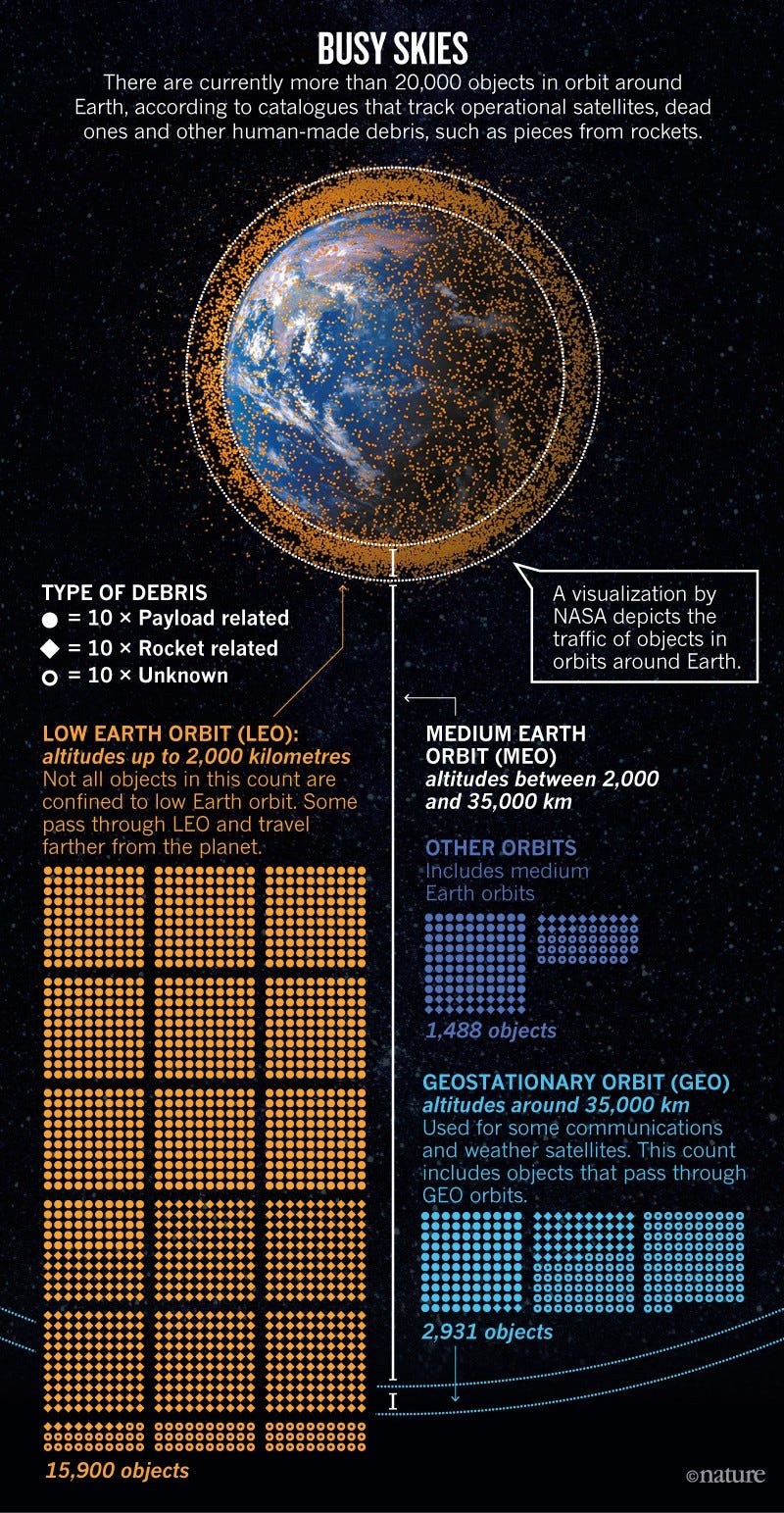Space Junk: The Threat to Our Future in the Cosmos
Written on
Chapter 1: The Challenge of Space Debris
Humanity has always dreamed of venturing beyond our planet, driven by curiosity to explore other celestial bodies. However, imagine a future where we are unable to launch into space—not due to a lack of technology or the effects of climate change, but because the orbits around Earth are cluttered with debris. This is a growing concern as the amount of space junk continues to rise, potentially endangering our spacecraft.
“The greatest risk to space missions comes from non-trackable debris,” notes Nicholas Johnson, NASA's chief scientist for orbital debris.
Section 1.1: Origins of Space Trash
The era of artificial satellites began in 1957 with the launch of Sputnik by the Soviet Union. Since then, various nations have launched approximately 8,900 satellites of differing sizes. While some of these satellites function for several years, many become non-operational and remain in orbit as inactive objects. It's estimated that around 5,000 satellites are still in space, but only about 2,000 are currently operational, leaving the rest as space waste. Over time, these satellites deteriorate due to radiation and other factors, breaking down into smaller fragments. In addition to satellite remnants, debris can also originate from rocket launches, collisions, and military tests. Of the existing debris, only 34,000 pieces exceed 10 cm, with countless smaller fragments posing a significant threat.

Section 1.2: The Dangers of Small Debris
Even debris as small as 1 cm can inflict severe damage, while pieces larger than 10 cm can obliterate satellites or spacecraft. This is largely due to the high speeds at which these objects travel, where even a tiny piece can become a deadly projectile. Consider it akin to a bullet—small in size but capable of causing catastrophic results. The potential for collisions has already been dramatized in films like "Gravity." The International Space Station frequently faces threats from fast-moving debris.
Some debris in lower orbits can re-enter the atmosphere and burn up, but items in higher orbits, such as those used for communications and weather monitoring, can remain in space for hundreds or even thousands of years, as reported by the National History Museum in the UK.
Chapter 2: The Increasing Problem of Space Junk
With private enterprises launching their own satellites, the amount of space debris is set to rise even further. For instance, Elon Musk's Starlink plans to deploy 40,000 satellites, while Amazon aims to launch 3,200 satellites for its Kuiper network. Boeing also has plans for its satellite constellation. Although these initiatives aim to improve internet access and communication in remote regions, the overcrowding of orbits could exacerbate the debris problem and interfere with astronomical research.
The first video titled "AFTER EARTH - M. NIGHT DELETED COMMENTARY" explores the implications of space exploration and the challenges we face with space debris.
Section 2.1: The Impact of Space Debris
The impact of space debris cannot be underestimated. Fast-moving fragments can strike spacecraft like bullets, leading to potentially disastrous outcomes. Even a minor breach in a rocket's structure can result in severe consequences. Notably, a collision in 2009 between a defunct Soviet satellite and an active U.S. satellite created a significant amount of debris. Currently, to mitigate these risks, satellites and the International Space Station must maneuver to avoid incoming debris. However, as the number of satellites increases, such evasive actions will become more complex and frequent, potentially trapping us on Earth amid a growing cloud of space junk.
The second video, "Where Will We Go After Earth Becomes Uninhabitable?" discusses the implications of a cluttered orbit on future space exploration.
Section 2.2: Innovative Solutions to Tackle the Problem
Addressing the debris issue requires a dual approach: reducing the creation of new debris while also cleaning up existing waste. Various innovative methods have been proposed, including using harpoons, nets, and lasers to capture and deorbit debris. Additionally, redirecting satellites into lower orbits to facilitate their safe re-entry into the atmosphere is being considered.
Moreover, the strategy to reduce space junk could be enhanced through economic incentives. An international agreement could impose fees for each satellite launched into orbit, with funds directed towards cleaning up existing debris. However, such measures could disadvantage new players in the space industry, potentially stifling innovation.
The race towards a future in space is exciting, but we must remain vigilant about the unforeseen consequences. If lessons from the past had been heeded, many of our current challenges—including those related to climate change—might have been avoided.